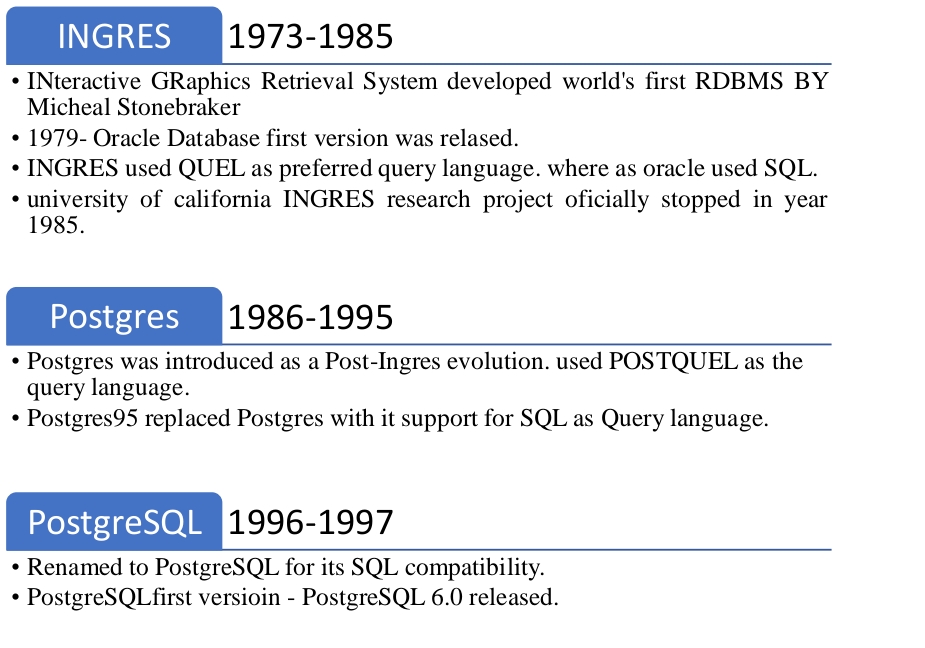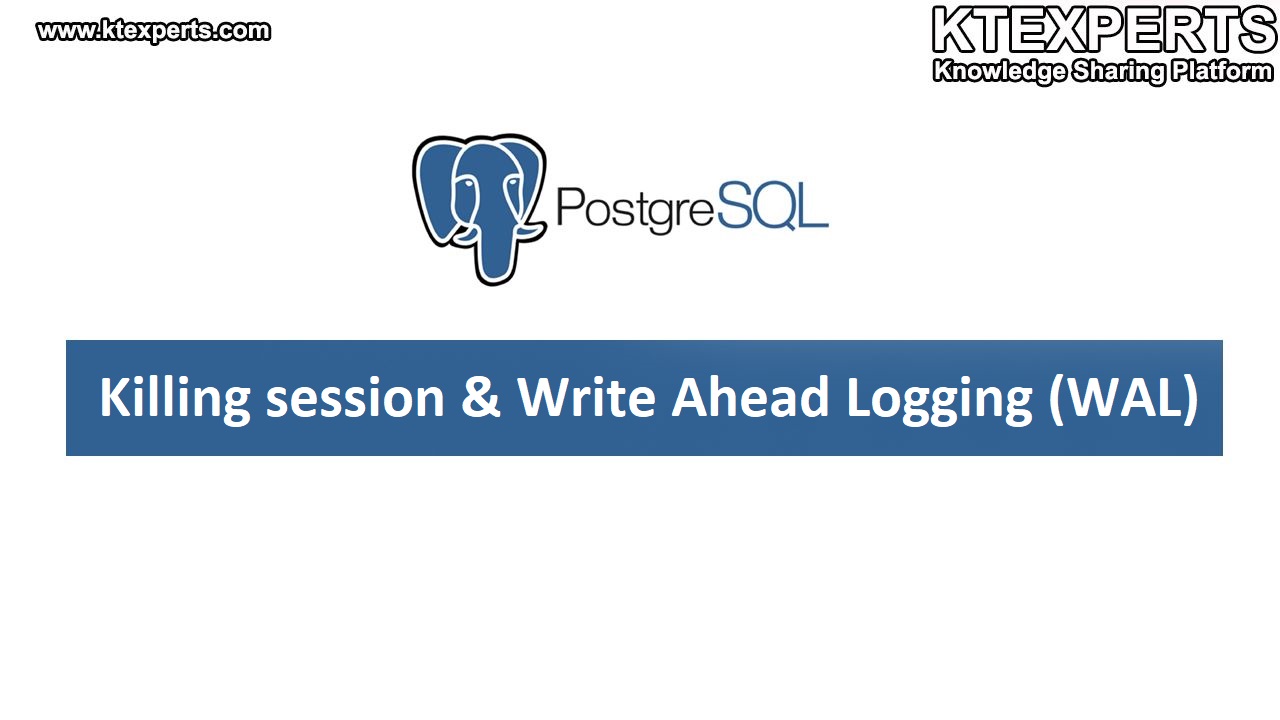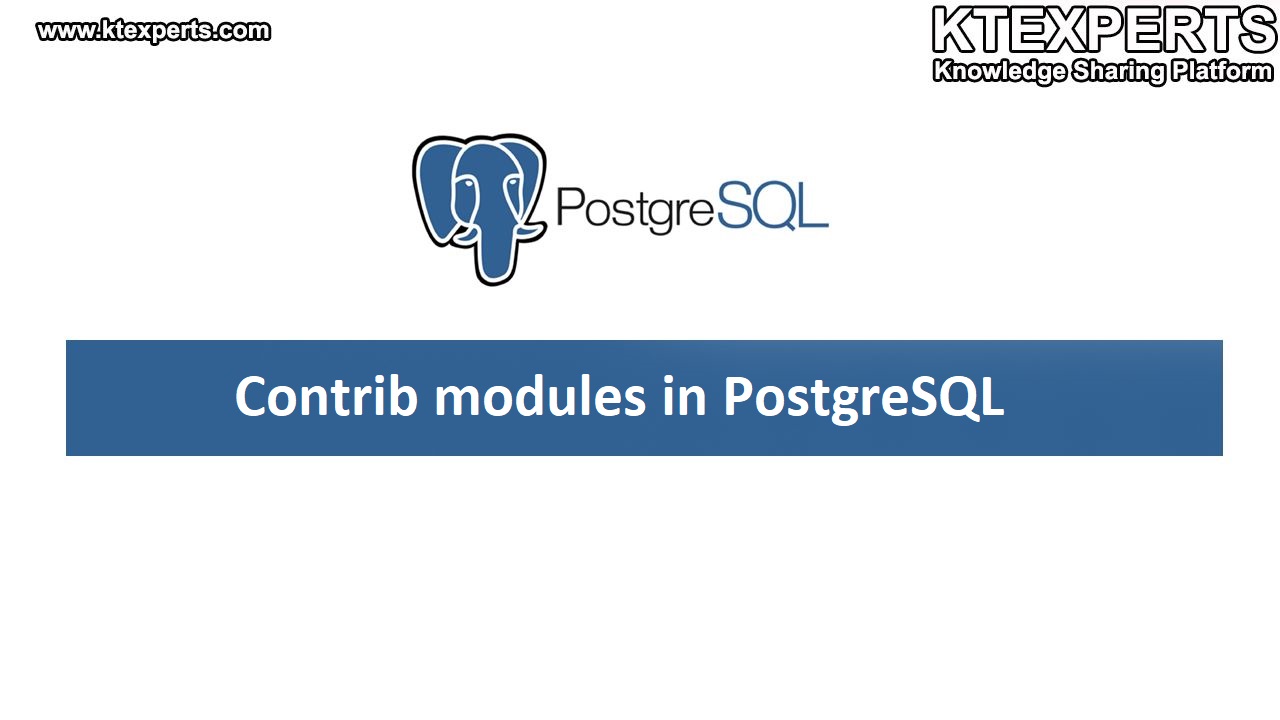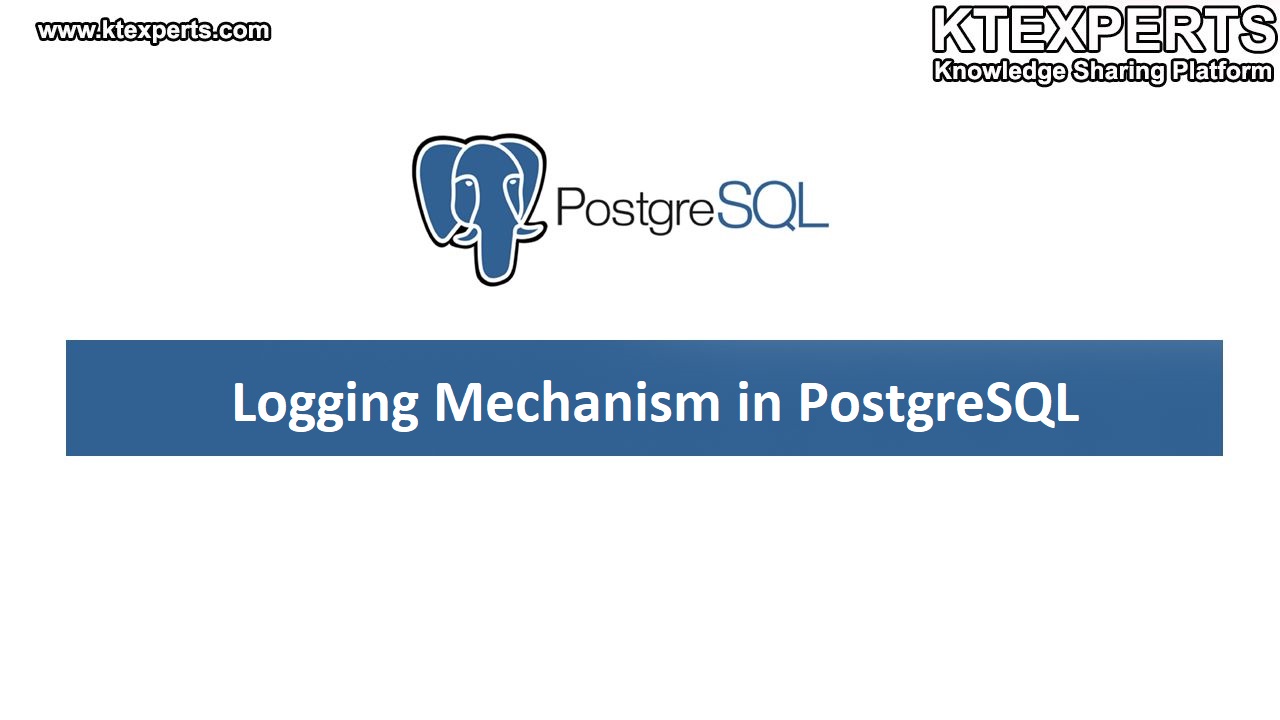Introduction to PostgreSQL

• PostgreSQL (pronounced as post-gress-Q-L) is a high demand open-source object relational database management system (ORDBMS). It was developed by a worldwide team of volunteers. It is not controlled by any private entity so, it is available for free.
• PostgreSQL uses a client/server model, the client and the server can be on different hosts. In that case they communicate over a TCP/IP network connection.
• In the modern development postgres uses the object-oriented database. Each table is a named collection of rows. Each row of a given table has the same set of named columns, and each column is of a specific data type. Whereas columns have a fixed order in each row, it is important to remember that SQL does not guarantee the order of the rows within the table in any way (although they can be explicitly sorted for display).
• Here, Tables are grouped into databases, and a collection of databases managed by a single PostgreSQL server instance constitutes a database cluster.
• It is written in C programming language.
• PostgreSQL is cross-platform and runs on various operating systems such as Microsoft Windows, UNIX, FreeBSD, Mac OS X, Solaris, HP-UX, LINUX, and so on.
• PostgreSQL will offer us the facility to add custom functions with the help of various programming languages such as Java, C, and C++, etc.
• In this, we can describe our functional languages, index types and data types, and we can also create a custom plugin to increase the reliability of our needs.
• Its source code is accessible under PostgreSQL license; thus, we can use it freely, change and allocate PostgreSQL in any form.
• The primary objective of PostgreSQL is to handle a variety of jobs from single technologies to web service or the data warehouse with several parallel users.
History of PostgreSQL

Features of PostgreSQL
PostgreSQL is an open-source descendant of original Berkeley code. It supports a large part of the SQL standard and offers many modern features:
• Complex queries
• Foreign keys
• Inheritance – Inheritance is a concept from object-oriented databases. A single table comprises the parent class and child class.
• Updatable views – if you do not want to type the query each time you need it. You can create a view over the query, which gives a name to the query that you can refer.
• Transactional integrity – it follow the transactions with ACID properties.
a- Atomicity –The entire transaction should be carried out, not just part of it.
b- Consistency – If a change is made to the database, it should always be retained in order to ensure the integrity of the data.
c – Isolation –When two transactions are carried out on two different databases, they might not have an impact on one another’s value.
d- Durability –Upon the transaction completion, the data is stored permanently in the database. Data should still function even in the event of a system failure.
• Multi version concurrency control – The primary objective of PostgreSQL is to handle a variety of jobs from single technologies to web service or the data warehouse with several parallel users.
Also, PostgreSQL can be extended by the user in many ways, for example by adding new
• Data types
• Functions
• Operators
• Aggregate functions – A single output is generated from numerous input rows by an aggregate function. There are aggregates, for instance, to calculate the count, total, average, maximum, and minimum over a set of data.
• Index methods
• Procedural languages – Four common procedural languages are supported by PostgreSQL, allowing users to write their own code in any of the supported languages and have the database server run it. These procedural languages include Python, PL/pgSQL, PL/Tcl, and PL/Perl.
PostgreSQL Database Administration
There are several open source and paid tools available in the market. These are some of the most commonly used tools:
1.psql – It is a terminal based front end to postgresql. It is a primary tool to manage PostgreSQL.
2.pgAdmin – PostgreSQL administration tool with a free and open source graphical user interface.
3.phpPgAdmin – It is a Web-based administration tool for PostgreSQL written in PHP. Based on phpMyAdmin tool manages by MySQL.OpenOffice.org Base.
4.pgFouine – It’s a fascinating Postgresql Analyser tool that’s used to create reports in HTML format.
MYSQL vs SQL SERVER vs PostgreSQL
| MYSQL | SQL SERVER | PostgreSQL | |
| Developed by | Oracle | Microsoft.inc | Global development group |
| License | Open source | commercial | Open source |
| Platforms Supported | All operating systems | Linux and Microsoft | All operating systems |
| Query Language | Standard SQL | T-SQL (transactional SQL) | Standard SQL |
| GUI Interface | MySQL | Microsoft SQL server | Pgadmin4 / |
| Written in | Primarily written in C and C++ | Primarily written in C++ | Primarily written in C language |
Author : Prudhvi Teja
LinkedIn : http://linkedin.com/in/prudhvi-teja-nagabhyru-715052224
Thank you for giving your valuable time to read the above information. Please click here to subscribe for further updates
KTExperts is always active on social media platforms.
Facebook : https://www.facebook.com/ktexperts/
LinkedIn : https://www.linkedin.com/company/ktexperts/
Twitter : https://twitter.com/ktexpertsadmin
YouTube : https://www.youtube.com/c/ktexperts
Instagram : https://www.instagram.com/knowledgesharingplatform




